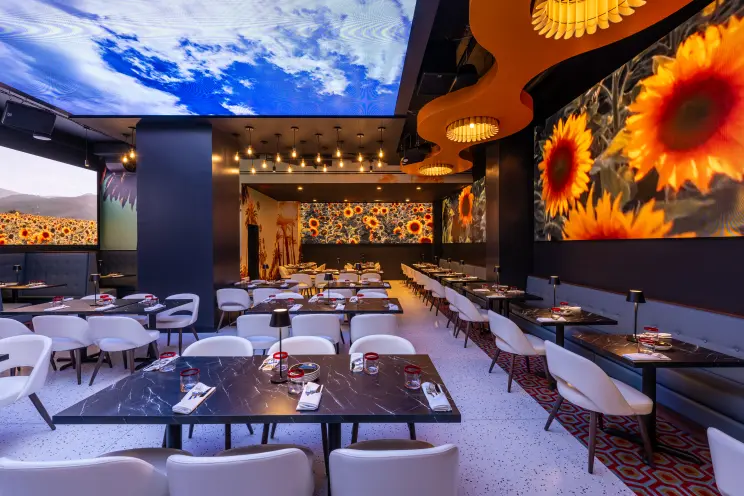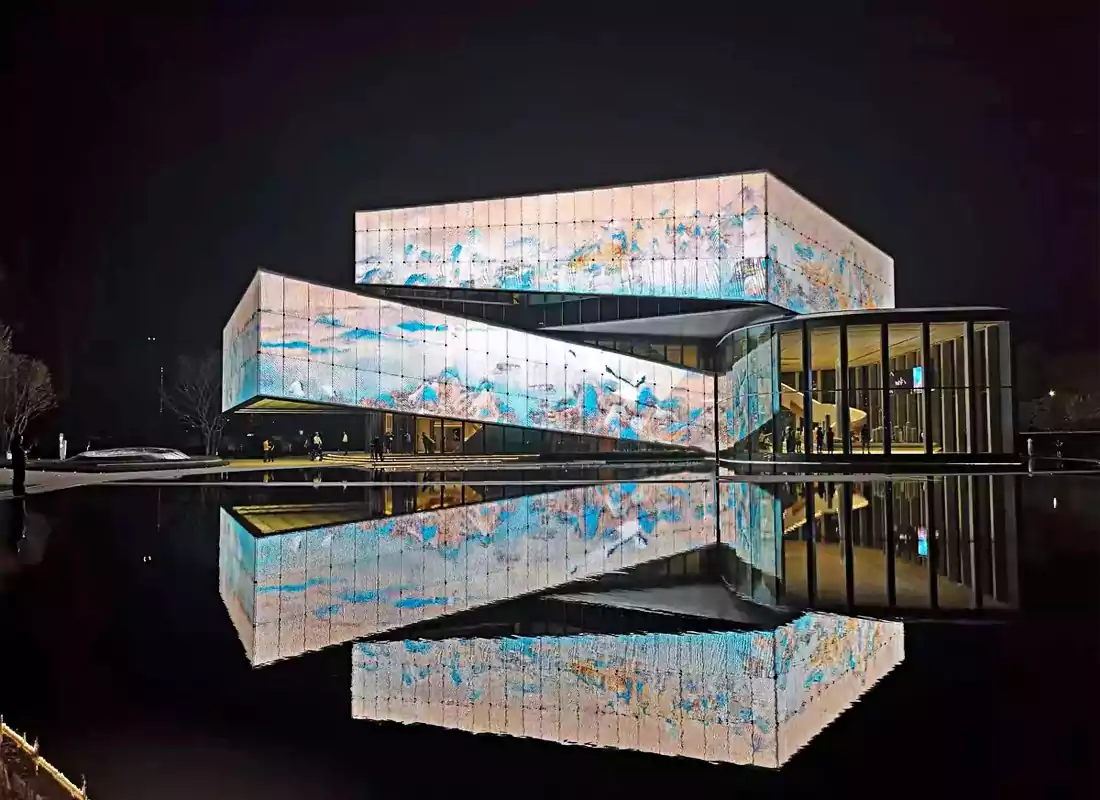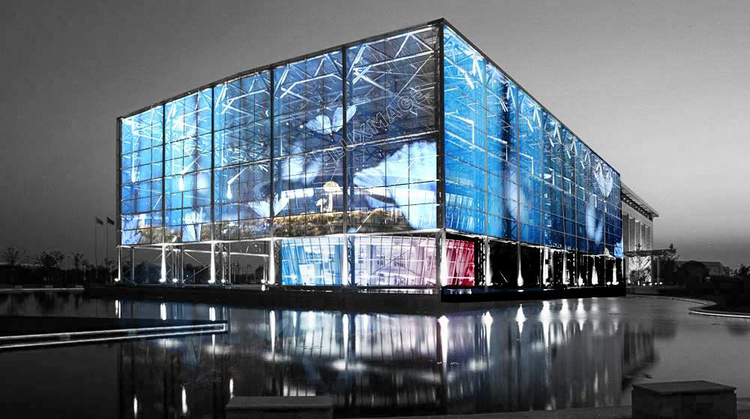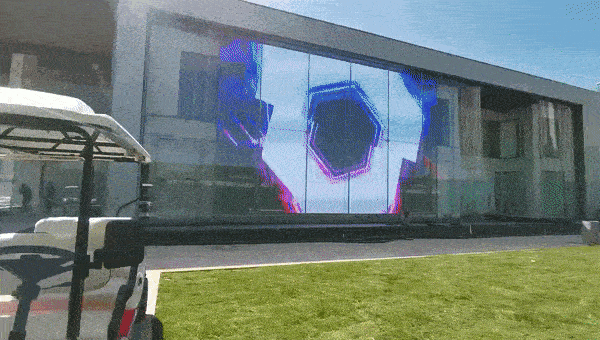

As cities get smarter and architecture evolves, so does the way we think about visual communication. One of the most exciting developments at the intersection of design and technology is the use of large transparent screens on building facades. These aren’t your typical LED billboards—they’re lightweight, see-through, and beautifully integrated into the surface of the building itself.

Whether you’re walking through downtown Los Angeles or exploring a luxury shopping district in Tokyo, it’s becoming more common to spot stunning visuals playing across the surface of glass towers or retail storefronts—without interrupting the view inside. This is the power of transparent LED display technology, and it’s completely reshaping how we think about digital signage for building facades.
In simple terms, a large transparent screen is made up of modular panels with micro-LED lights embedded into a see-through mesh or glass layer. This allows the display to remain almost invisible when it’s turned off, and brilliantly eye-catching when it’s on. These systems are often referred to as LED see-through screens, glass LED screens, or transparent digital signage, and they work particularly well on building exteriors.

Unlike bulky traditional LED walls, these displays don’t overwhelm the architecture. Instead, they integrate into it—acting as a subtle layer of dynamic content that turns your building into a living canvas. When done right, the effect is both futuristic and surprisingly elegant.
There are a few big reasons why architects, developers, and brands are turning to transparent video walls for facades.
First, they don’t block natural light. Since these screens are mostly transparent, they allow daylight to pass through into the interior of the building. That makes them ideal for glass-walled buildings, retail flagships, airports, hotels, and even office towers that want to maintain a clean, open aesthetic.
Second, they offer high visibility without visual noise. You can run digital campaigns, event promotions, or ambient graphics during the day or night—all without creating the cluttered look of a traditional billboard. In many ways, it’s the perfect balance of form and function: modern architecture meets meaningful content.
Brands have also started using them as part of luxury retail digital signage, transparent signage for cosmetic brands, and outdoor transparent displays for fashion houses, art exhibits, and tech showcases. It’s immersive, but not overpowering.

Sure, transparent LED displays are amazing for marketing—but they can also be used to create public art installations, cultural messaging, or seasonal visual themes that bring buildings to life. You might see a transparent billboard playing soft animations across a glass tower in winter, or a brand showcasing holographic-style product visuals using a holographic display screen built into its facade.
Some commercial spaces have even started using interactive transparent displays that respond to motion or environmental triggers—bringing a whole new level of creativity to digital signage for building facades.
And because many of these displays are modular and scalable, they can be custom-sized for unique architectural features—think curved glass corners, multi-story vertical walls, or mixed-material exteriors.
The short answer? Not every building, but more than you might think. One of the myths around transparent LED displays is that they’re only for flashy tech companies or futuristic skyscrapers. But these days, they’re being used by real estate developers, hospitality groups, and retail centers to bring energy and visual storytelling into everyday spaces.
With improvements in transparent screen visibility in daylight, ultra-thin LED panels, and weather-resistant components for outdoor transparent screens, the tech has become more versatile than ever.
And while the transparent LED screen cost varies based on size and brightness, many building owners see it as an investment—not just in advertising, but in the identity of the space itself.

The days of flat, static buildings are behind us. With large transparent screens for building facades, we’re stepping into an era where glass isn’t just structural—it’s digital. These displays offer a rare combination of utility and beauty, letting brands, artists, and designers turn architecture into an experience.
If your building has a story to tell—or a message to share—it might be time to explore what clear LED advertising screens can offer. Not just louder signage… but smarter, more human-centered communication.